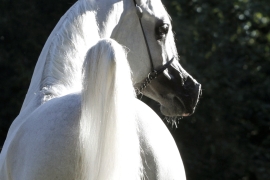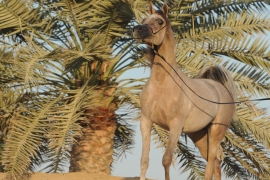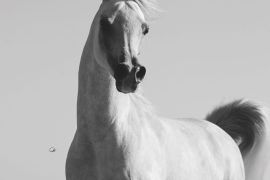Now I wish to take a look at what did not "Get Away" by revisiting some of the other combinations of Egyptian breeding which will add to the quality and genetic choices for today’s straight Egyptians.
First, let us take into account that the Saklawi I or Nazeer sire line is now the most dominant in Straight Egyptian breeding. In fact, the Nazeer sire line could be nearly the most dominant in the whole breed now when one also considers the heavy use of the Aswan, Ali Jamaal and Gazal Al Shaqab branches of Nazeer's sire line, not to mention the huge patriarchy of Morafic and Ansata Ibn Halima. It would not be difficult to find a stallion of the Nazeer sire line today. So why not explore the other sire lines in Egyptian breeding as a harmonic balance to the current distribution?
The second most numerous sire line in Egyptian breeding is the Jamil El Kebir or Rabdan sire line. This line comes forward today in two branches, Ibn Samhan and Ibn Rabdan (see Arabian Essence Newsletters: Remembering Rabdan El Azrak, parts 1-3, January to March 2009).
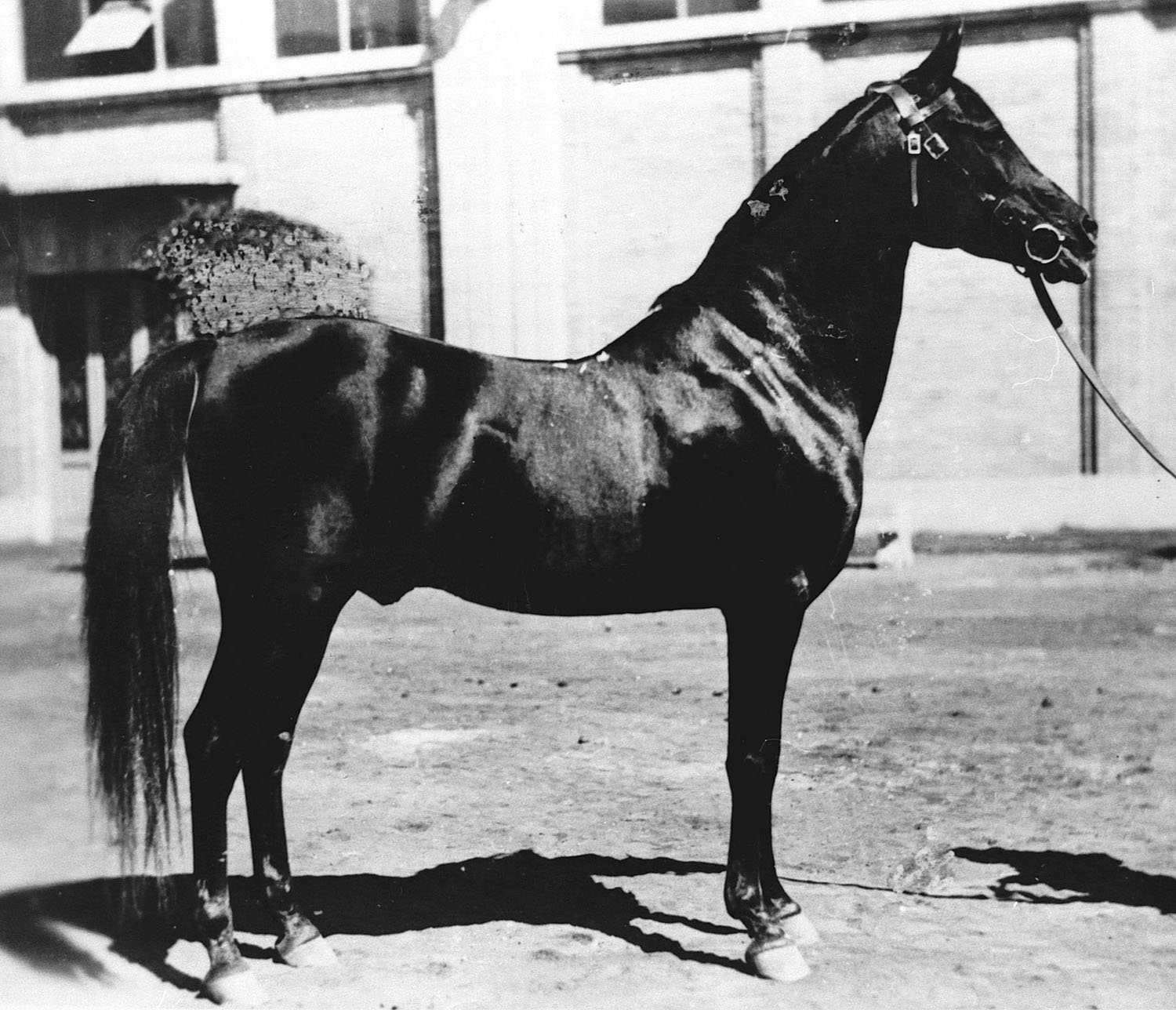
Ibn Rabdan (Rabdan x Bint Gamila) main branch of the Jamil El Kebir sire line.
Forbis archive.
In this newsletter we will cover the Ibn Rabdan branch which has four key progenitors:
- Ibn Fayda (Ibn Rabdan x Fayda) represented by 1 grandson, Sameh and his extended lines
- Fadl (Ibn Rabdan x Mahroussa) represented by 3 sons, Fa-Serr, Fabah and Lothar and their extended lines
- Shahloul (Ibn Rabdan x Bint Radia) represented by 2 sons, El Sareei and Mashhour and their extended lines
- Hamdan (Ibn Rabdan x Bint Radia) represented by 2 sons, Anter and Hamdan II and their extended lines
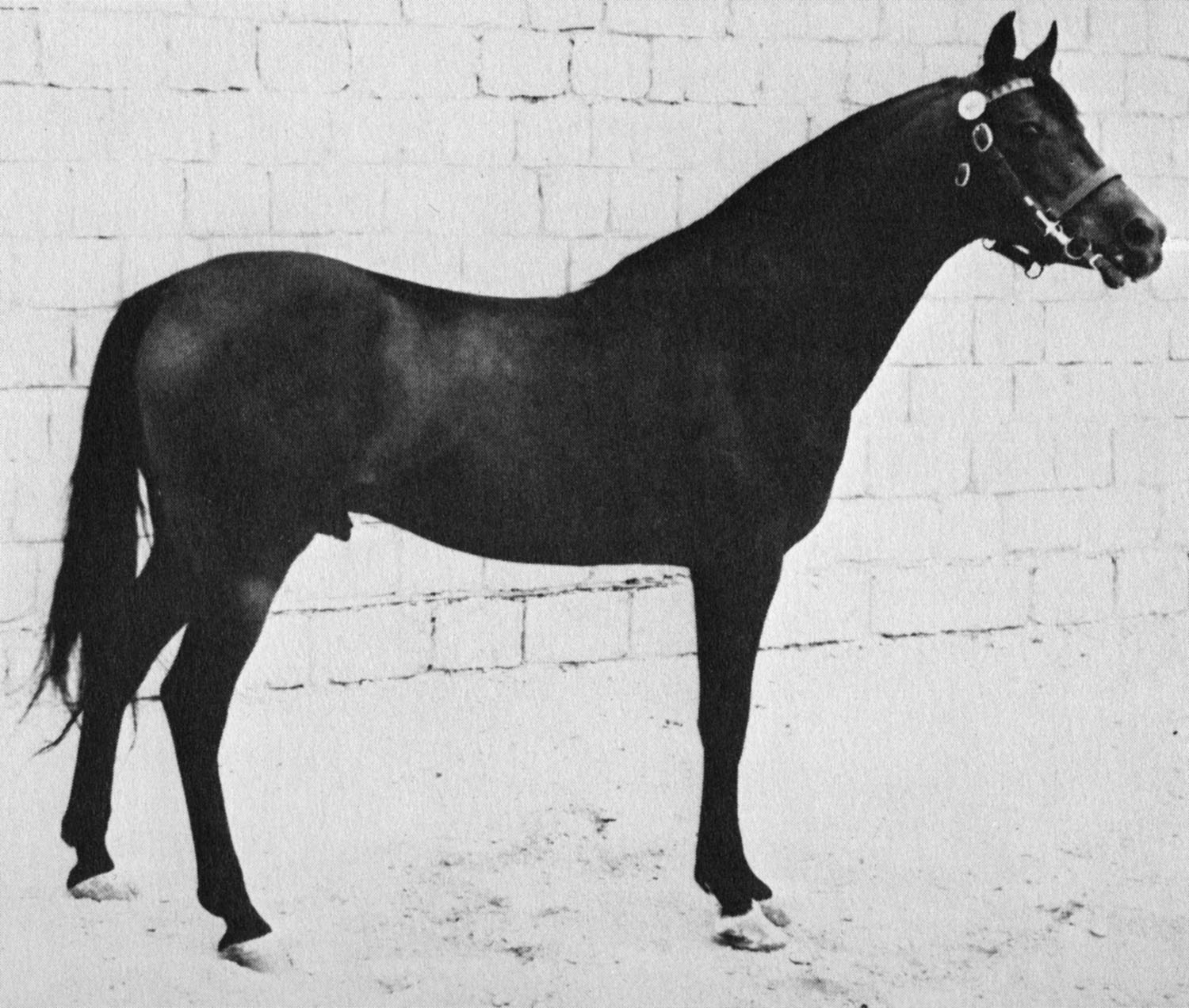
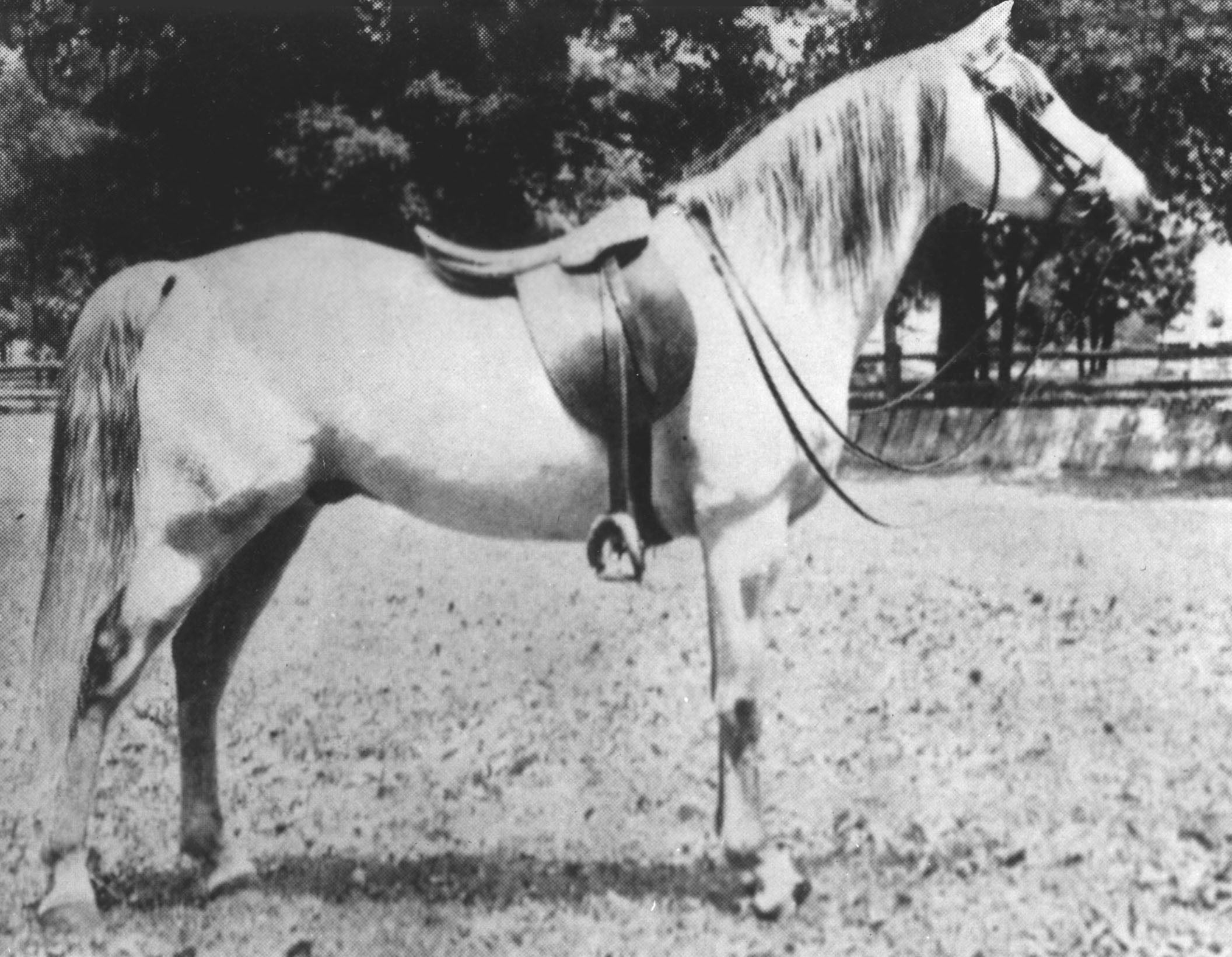
Ibn Fayda (Ibn Rabdan x Fayda) Fadl (Ibn Rabdan x Mahroussa)
grandsire of the legendary Sameh. imported to the U.S as a 2 year old
Forbis archive. and a major sire line for many years in America.
Ferriss archive.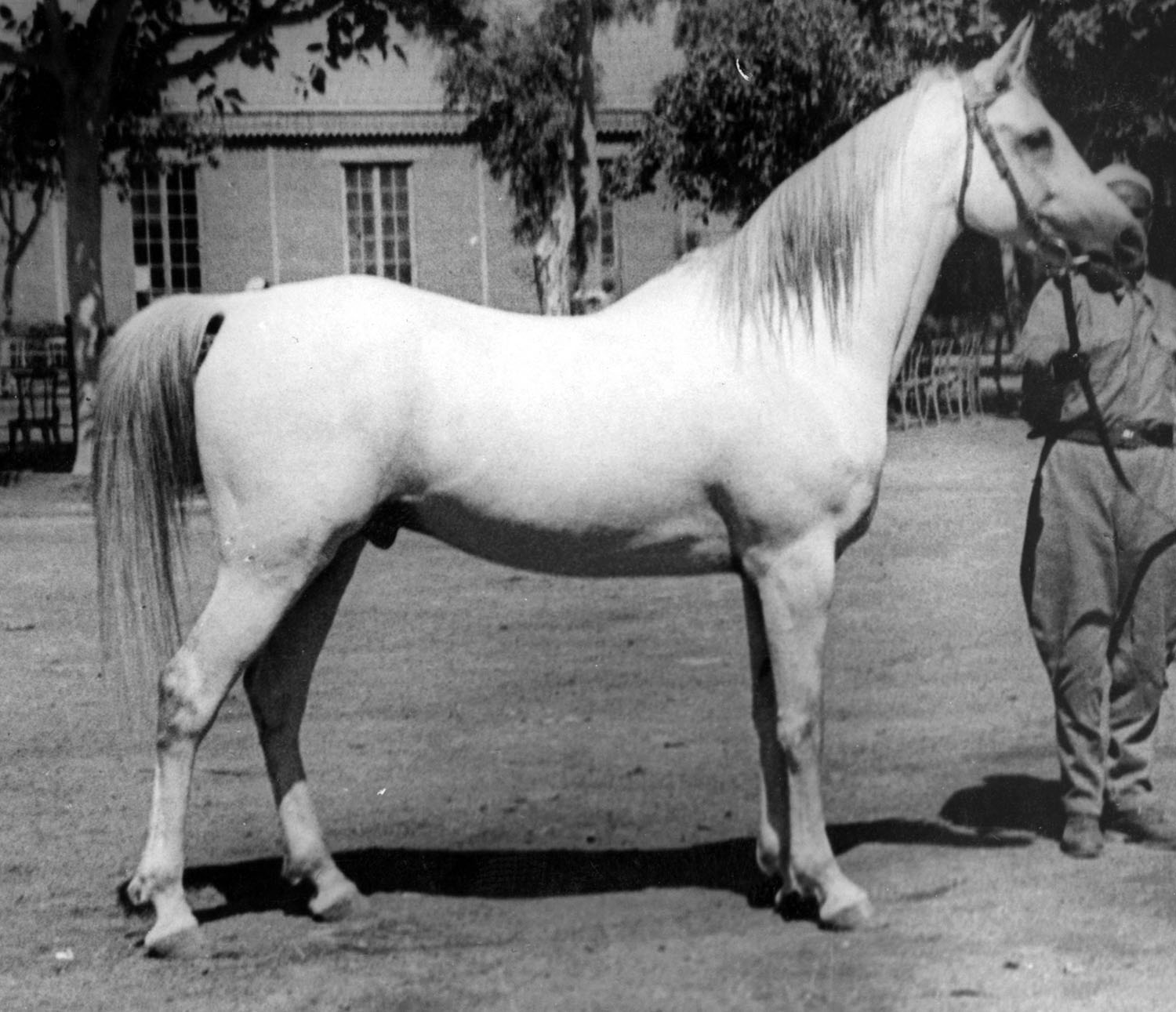
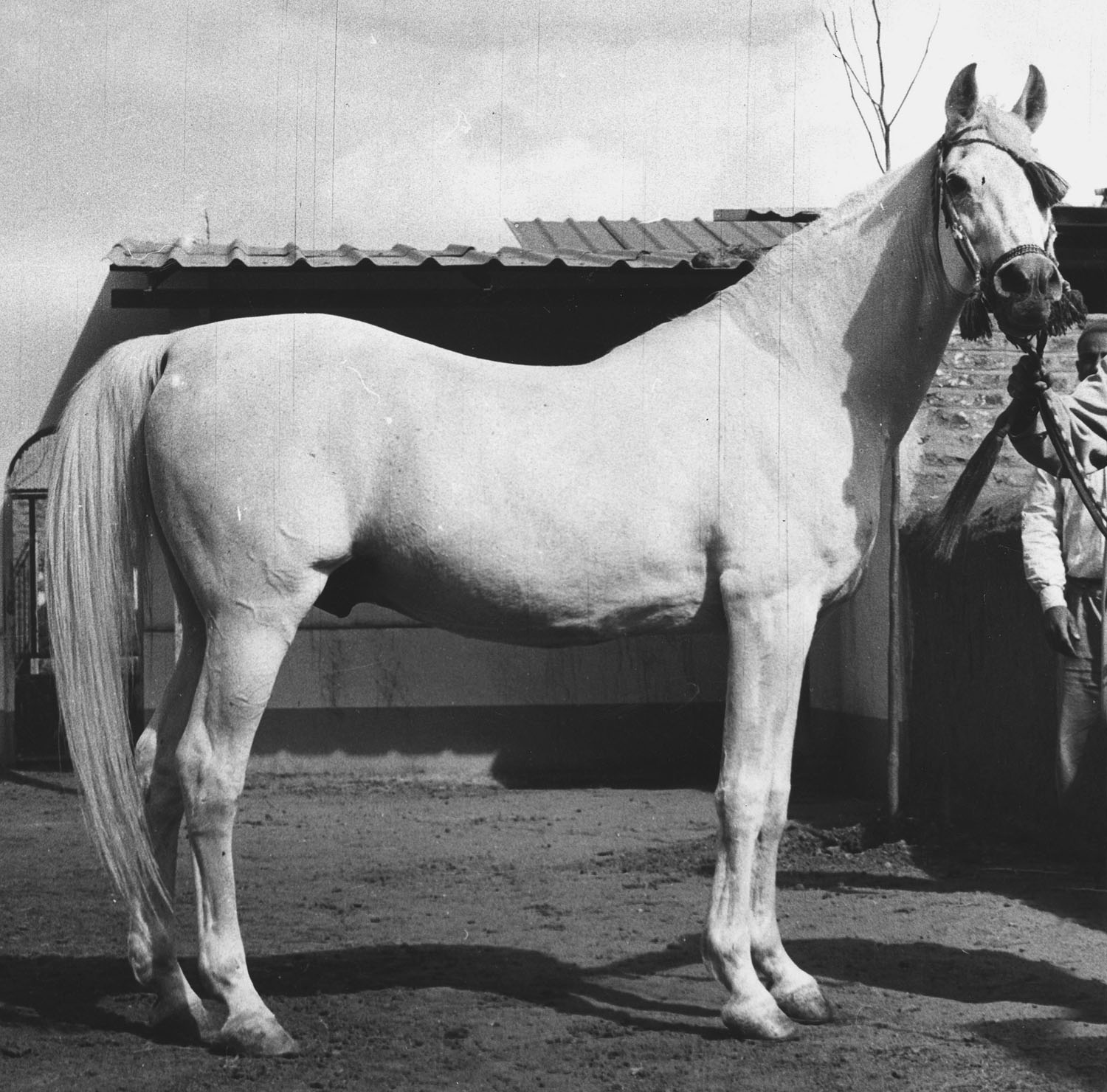
Shahloul (Ibn Rabdan x Bint Radia) Hamdan (Ibn Rabdan x Bint Radia),
the successor to Ibn Rabdan at the R.A.S., younger brother to Shahloul who became
yet the sire line to him is reasonably rare. a lead sire for the Royal Inshass stud
Forbis archive. and later the Hamdan Stud in Egypt.
Forbis archive.
IBN RABDAN BRANCH
The older of the four key progenitors is Ibn Fayda who is very rich in the old Ali Pasha Sherif breeding. Ibn Fayda's patriarchy comes forward through the great stallion Sameh via 3 of his sons: Ibn Hafiza, Sultann and Aseel. All three of these were handsome horses of good body type and movement but of rather plain head. The hallmark of Ibn Rabdan breeding is often the beautiful body proportions, good length of neck, excellent shoulders, good depth of body, strong quarters, good legs and very good movement, but like Ibn Rabdan himself, the heads are not as beautiful as the Nazeer sire line. However the female lines play a role over time in improving the heads and when all else is maintained, the results are very good indeed. So considering a stallion of Ibn Rabdan's sire line as a kind of outcross makes more sense in today's pedigrees. One can choose the Ibn Rabdan sire line and have it both ways, quality and beauty. Let's first look at a few of the great sires who come from the Ibn Fayda-Sameh line.
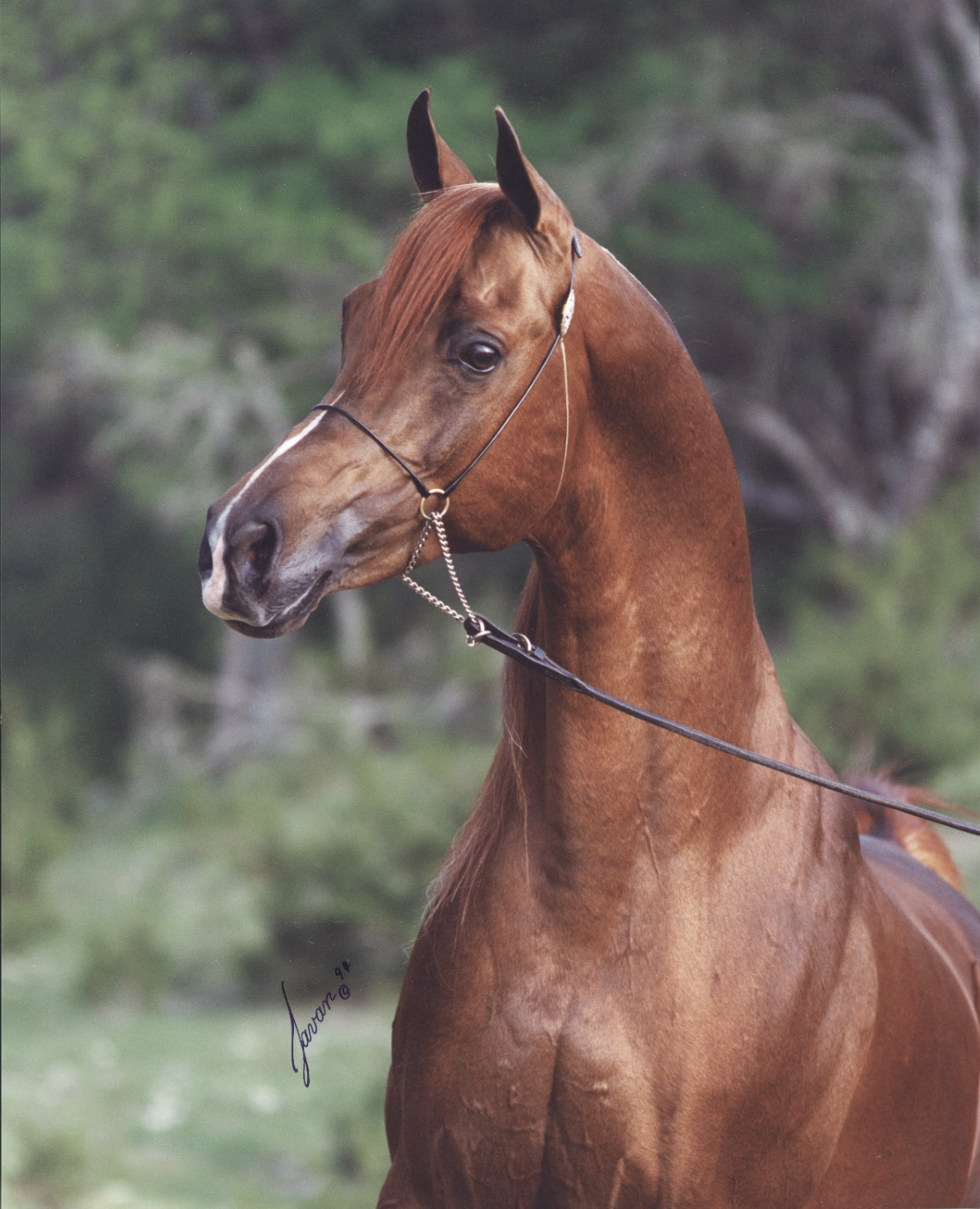
The magnificent Tammen (Abenhetep x Talgana)
from the Ibn Fayda line via Ibn Hafiza.
Javan photo.
Ibn Hafiza (Sameh x Hafiza) was an incredible mover. He was much more handsome in person than in pictures. He walked like a panther covering lots of ground and had the most beautiful silhouette. He is the grandsire of the magnificent chestnut stallion Tammen, a beautiful example of the Ibn Rabdan sire line and although Tammen daughters are his most sought after get, there are still some sons of him today to consider.
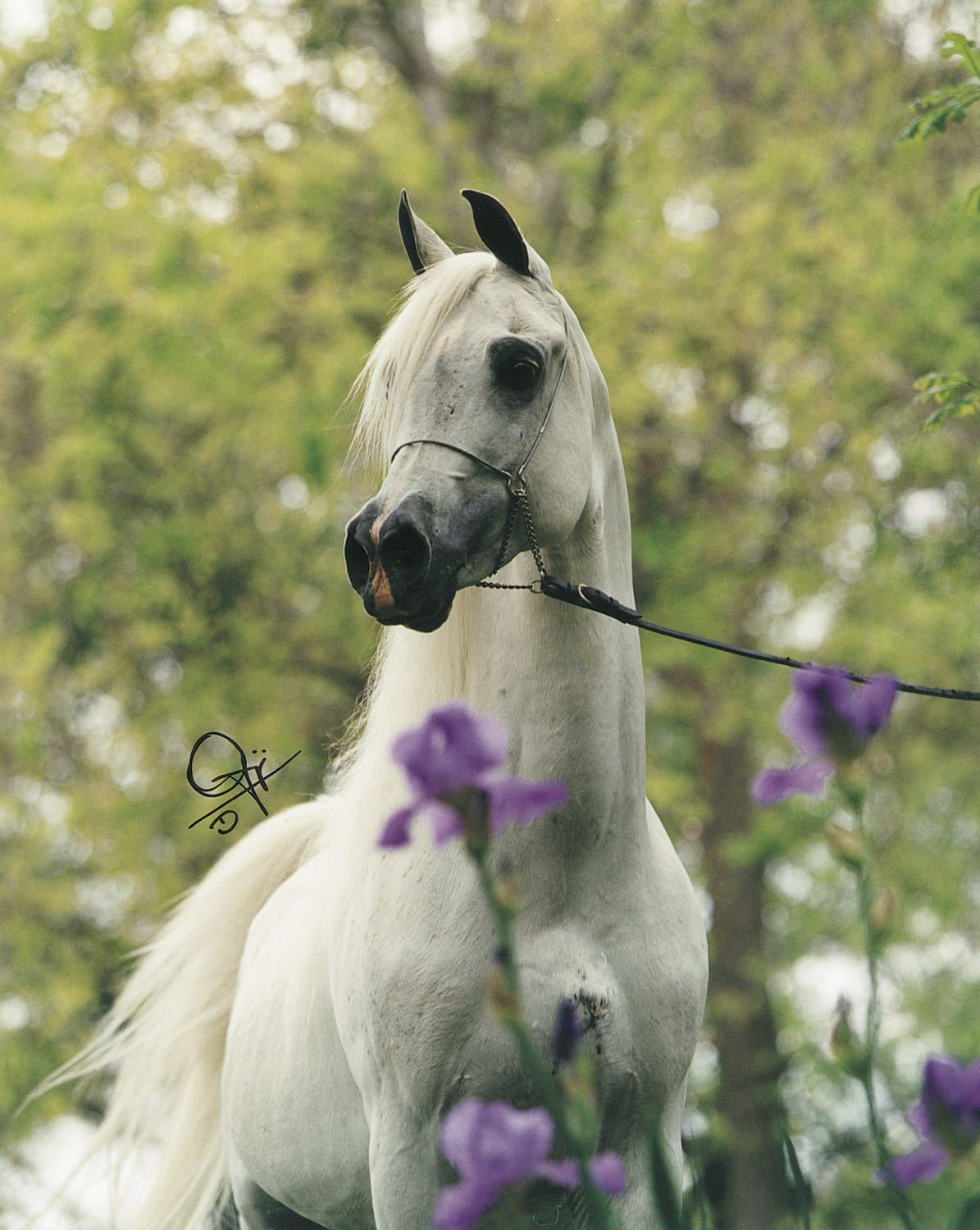
Makhsous (Sultann x Nabda)
an exceptional sire from the Ibn Fayda line via Sultann.
Gigi Grasso photo.
Sultann (Sameh x Lubna), like Ibn Hafiza, was an incredible mover and a refined and exotic horse to see in person. He has three famous sons, Asadd, Makhsous and Sakr. Asadd was U.S. National champion and a charismatic horse of beautiful proportions, but his sire line is very rare now. Makhsous proved an exceptional sire and is remembered for his prominent sons, Marquis I, Calypso Dance and Makhnificent KA. Sakr was the most winning straight Egyptian stallion in the U.S. ever with many National level wins in performance. To see him compete under saddle was an unforgettable spectacle of power, movement and classic Arabian horse type. His nostrils would flare just like the 19th century engravings of beautiful Arabians. Known mostly for his daughters, it was Sakr's son Nabiel (x Magidaa) who became an incredible sire, becoming the 17th most prolific sire world wide. His son Sabiel became U.S. Egyptian Event Supreme Champion stallion and then he was exported winning World Junior Champion and Qatar Champion. One of the most beautiful Nabiel sons and a much admired sire on several continents is Akid Geshan (Nabiel x Akid Hanalei).
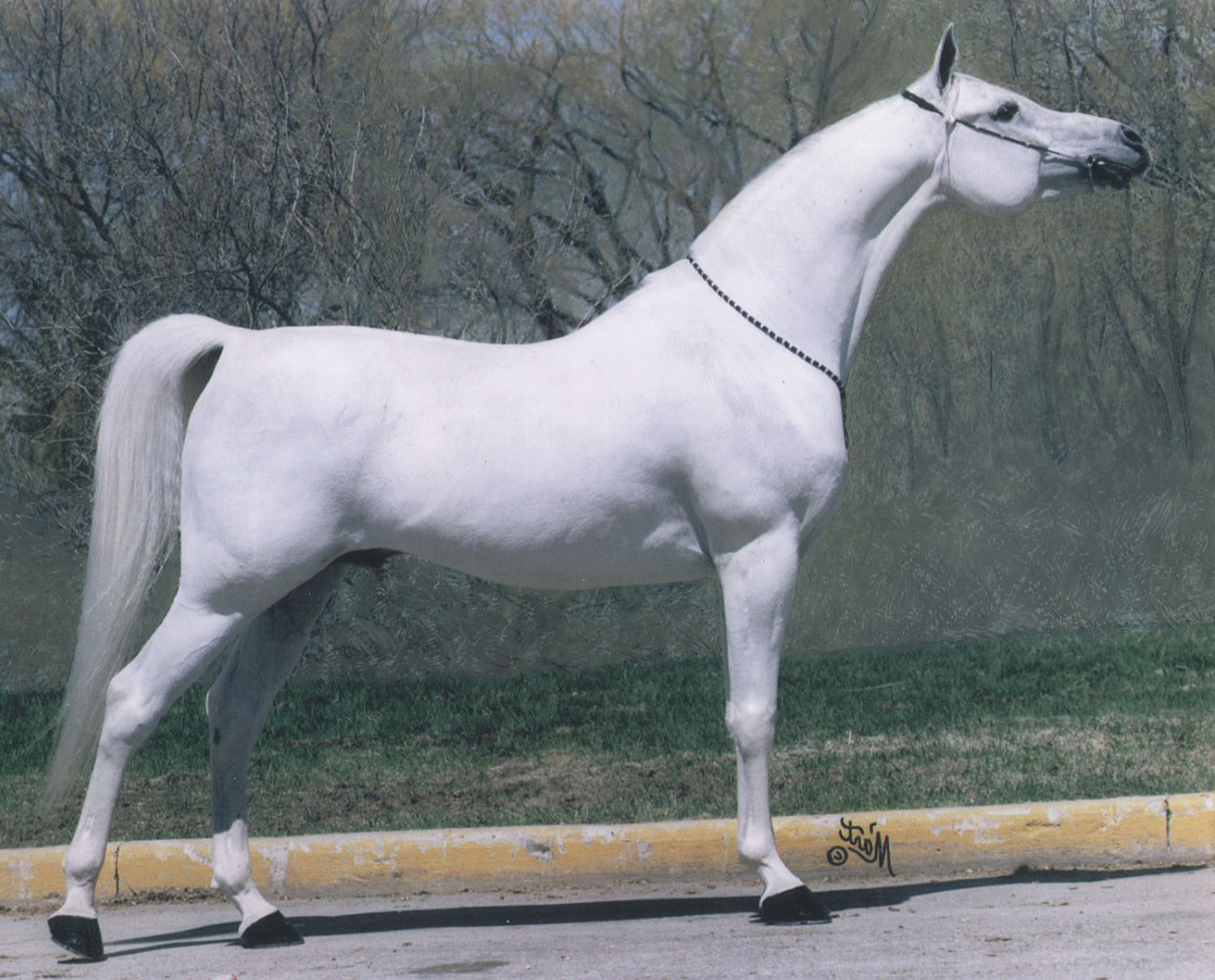
A beautiful son of Nabiel, Akid Geshan (x Akid Hanalei)
a popular sire from the Ibn Fayda line via Sultann.
M'art photo courtesy of Debra Geiser.
Aseel (Sameh x Inas) has eight sons representing his sire line but one became the most famous, that being his exotic son El Mareekh (x Rawayeh). This beautiful bay stallion was an unforgettable sight in person but unfortunately died young. However two of his sons figure prominently in today's straight Egyptian champions: Ibn El Mareekh (x Bint Deenaa) and MFA Mareekh Amir (x MFA Monien).
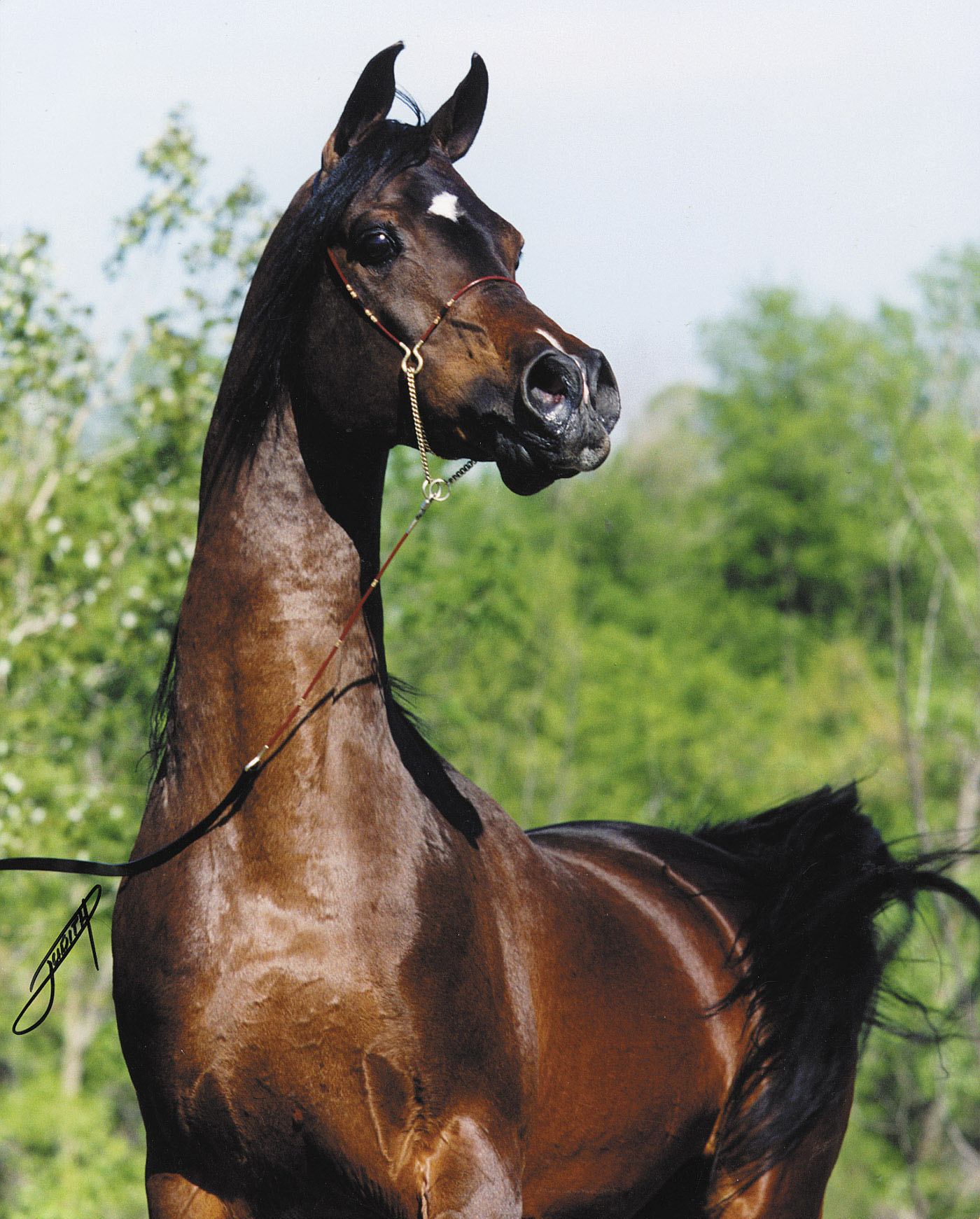
Ibn El Mareekh (El Mareekh x Bint Deenaa), half brother to Anaza El Farid,
he is a very successful sire line from the Sameh son Aseel.
Judith photo.
Of the four key progenitors of the Ibn Rabdan line, three of them, Fadl, Shahloul, and Hamdan are closely related being three-quarter brothers. Fadl was imported to the U.S. in 1932 as a two year old while Shahloul and Hamdan remained in Egypt.
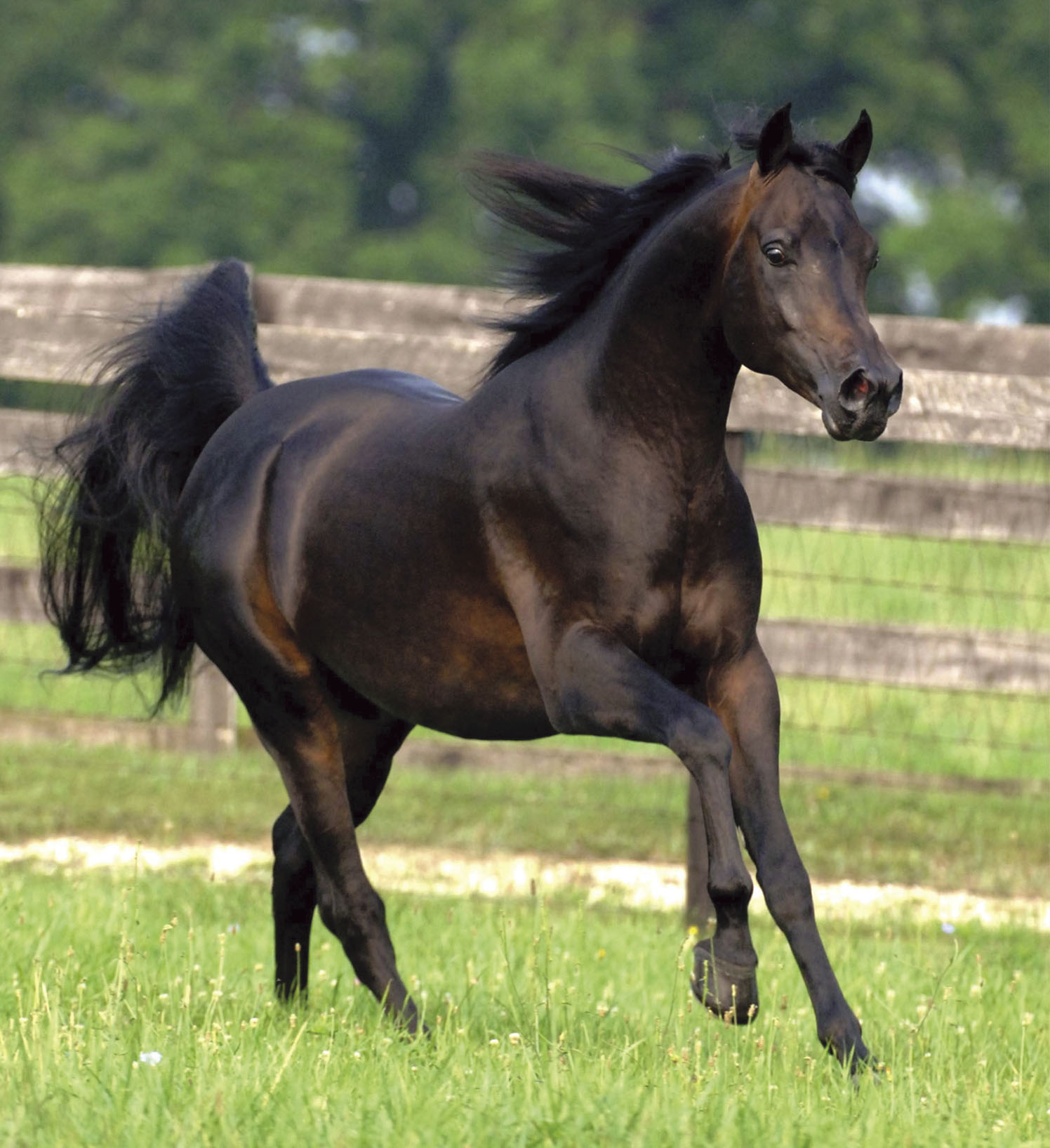
Imperial Shehaab, handsome son of Ibn Safinaz
and three-quarter brother to Safeen.
He represents the Ibn Rabdan sire line via Shahloul.
Shahloul (Ibn Rabdan x Bint Radia) became a replacement for his sire at the R..A.S. and sired very few male horses. He is most famous for his splendid daughters, Moniet El Nefous, Bukra, Kateefa and Maisa. However two Shahloul sons were retained by the R.A.S. The older one, Mashhour (x Bint Rustem) also sired good daughters but left only one son to replace him at the E.A.O. which was Seef (x Elwya). Seef in turn got a number of fine daughters. His most famous son is Ibn Safinaz (x Safinaz) who became an important outcross stallion for Imperial Egyptian Stud. A very good sire, Ibn Safinaz is the sire of two very impressive stallions, Safeen (x Abitibi x Madeena) and his three-quarter brother Imperial Shehaab (x MB Mazaraa). Shahloul's only other son of note is El Sareei, the handsome full brother of Maisa and sire of the magnificent stallion Tuhotmos (x Moniet El Nefous). Tuhotmos was also a heavily used sire yet his sire line is quite rare today.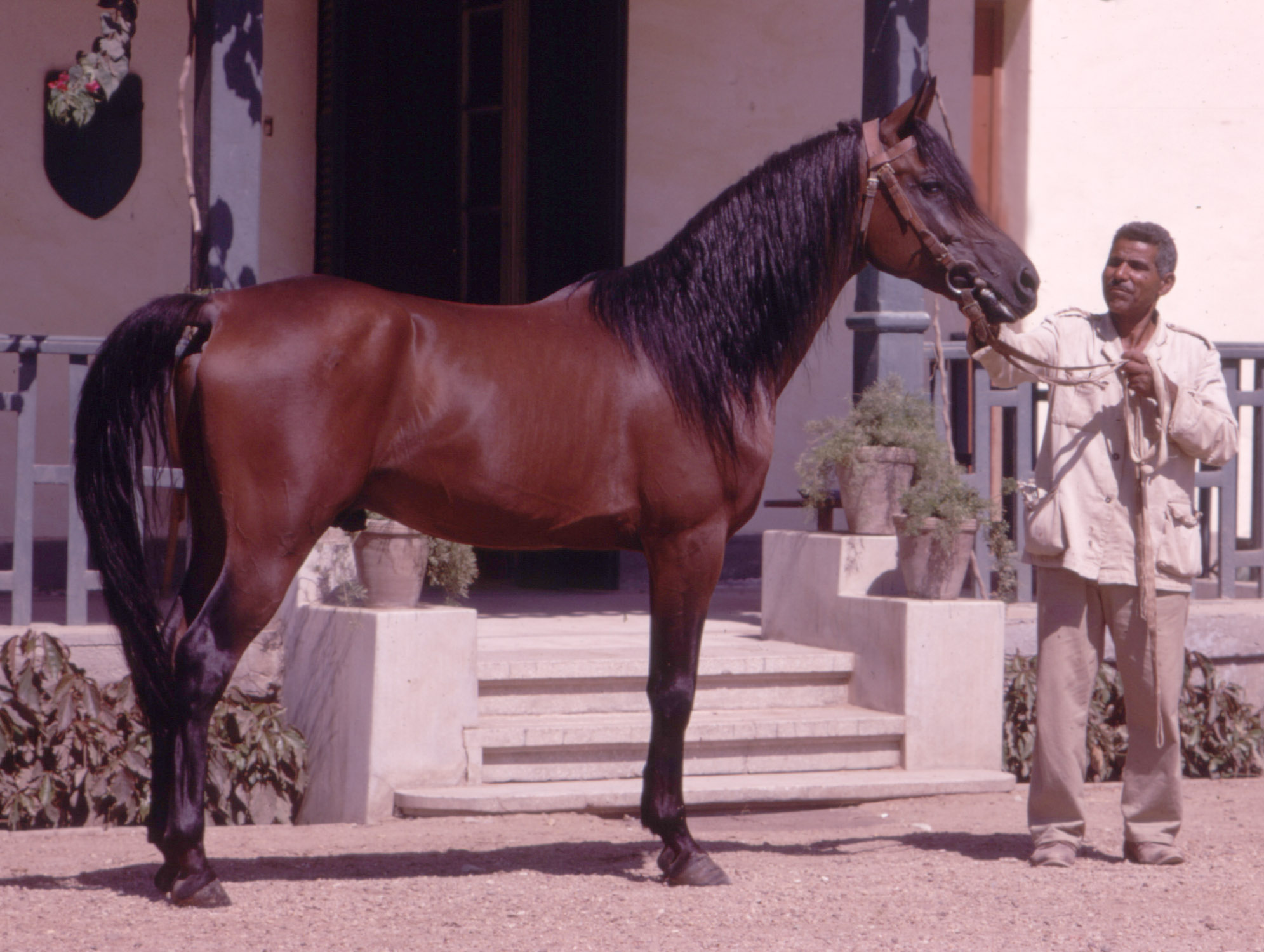
Tuhotmos (El Sareei x Moniet El Nefous)
pictured here as a young horse in Egypt,
certainly the most popular grandson of Shahloul.
Judi Forbis photo.
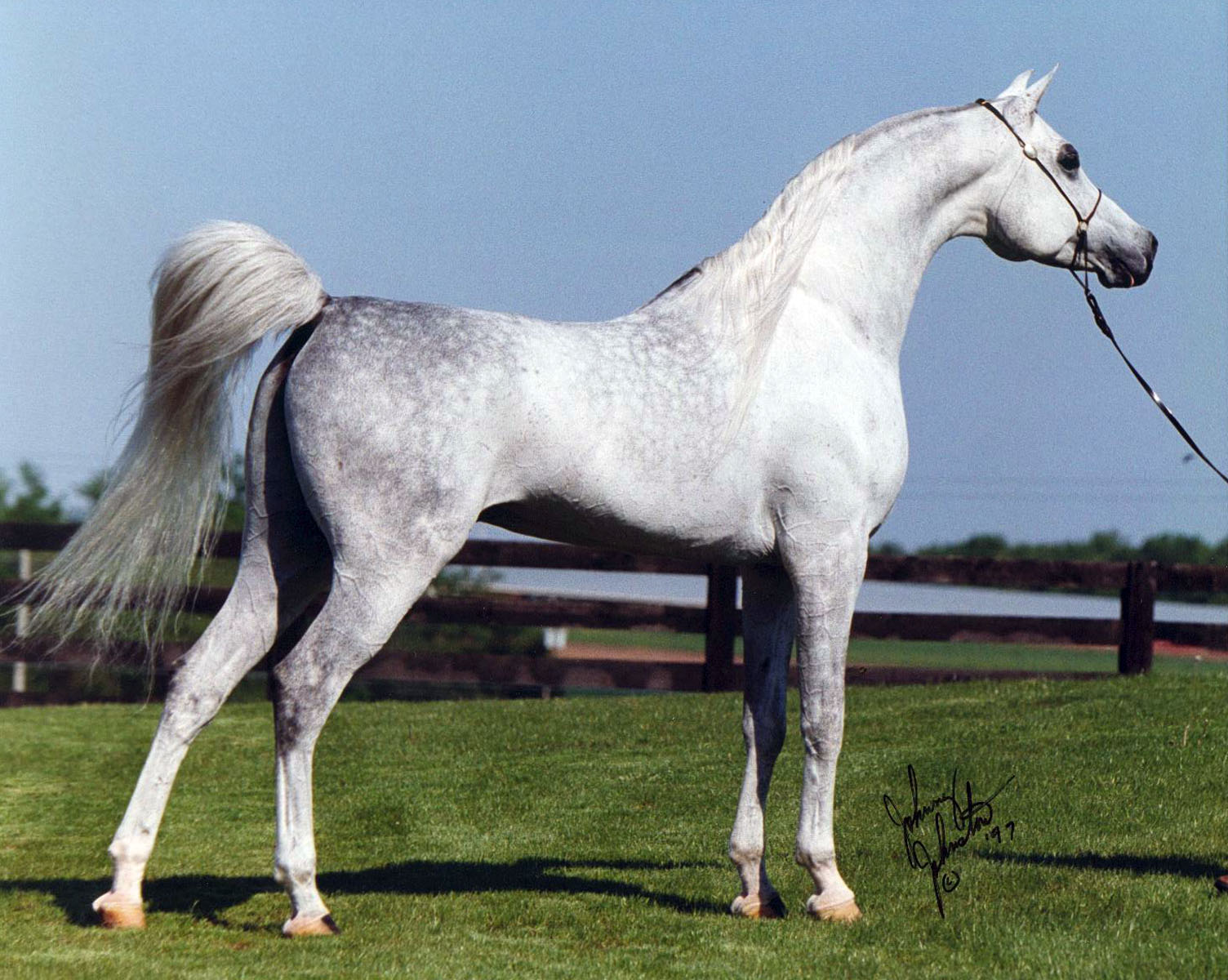
Hadidi (Norus x Hebet Allah), a World Champion grandson of Gharib,
representing the Ibn Rabdan sire line via Hamdan's son Anter.
Johnny Johnston photo.
Shahloul (Ibn Rabdan x Bint Radia) became a replacement for his sire at the R..A.S. and sired very few male horses. He is most famous for his splendid daughters, Moniet El Nefous, Bukra, Kateefa and Maisa. However two Shahloul sons were retained by the R.A.S. The older one, Mashhour (x Bint Rustem) also sired good daughters but left only one son to replace him at the E.A.O. which was Seef (x Elwya). Seef in turn got a number of fine daughters. His most famous son is Ibn Safinaz (x Safinaz) who became an important outcross stallion for Imperial Egyptian Stud. A very good sire, Ibn Safinaz is the sire of two very impressive stallions, Safeen (x Abitibi x Madeena) and his three-quarter brother Imperial Shehaab (x MB Mazaraa). Shahloul's only other son of note is El Sareei, the handsome full brother of Maisa and sire of the magnificent stallion Tuhotmos (x Moniet El Nefous). Tuhotmos was also a heavily used sire yet his sire line is quite rare today.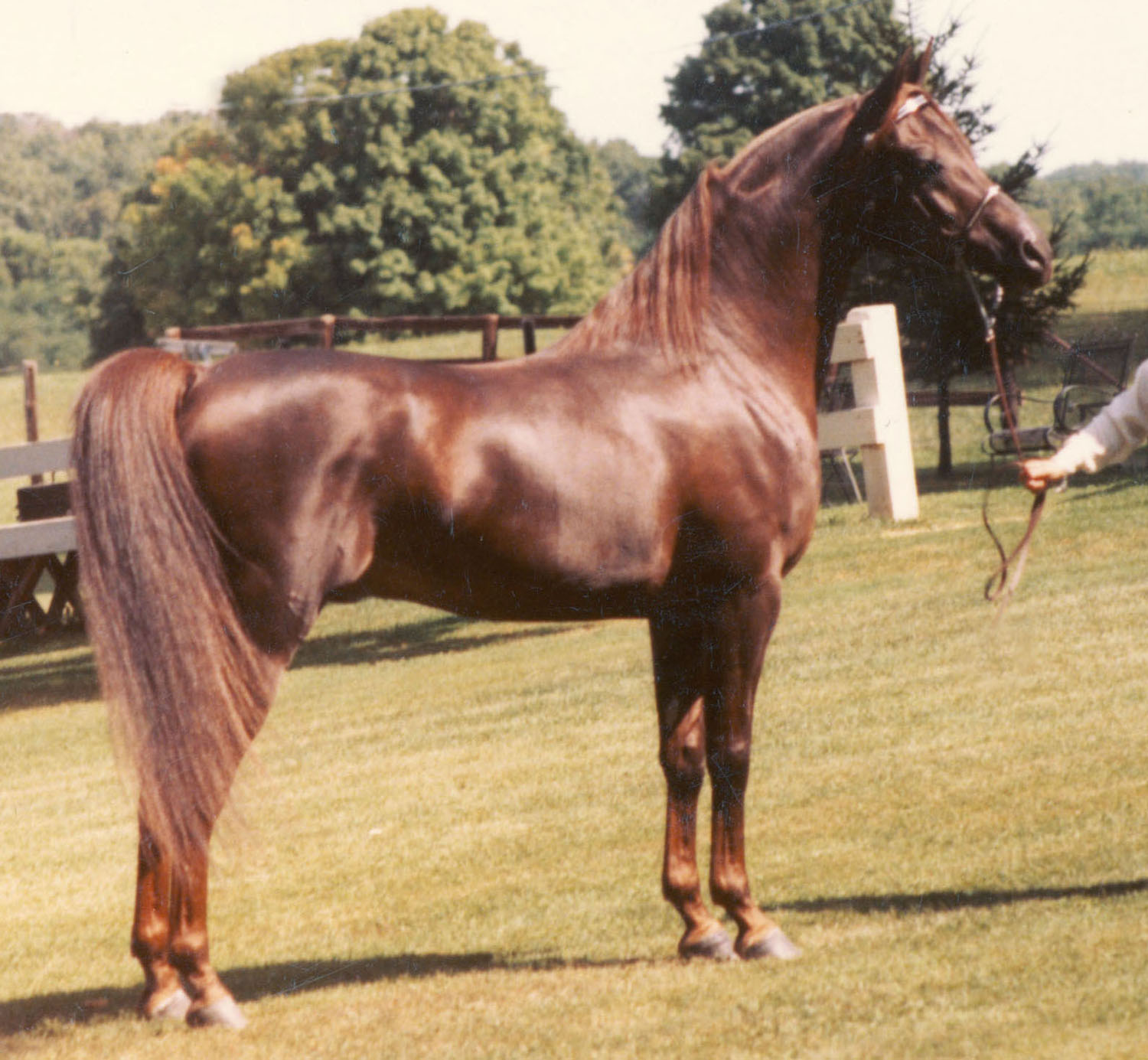
Serr Rou (Ibn Fa-Serr x Bahrou)
a very handsome liver chestnut stallion showing
a strong resemblance to his sire line to Ibn Rabdan via Fadl.
Sharon Ferriss photo.
Shahloul's full brother Hamdan was gifted to King Farouk as a young horse and became an important sire for the Inshass Royal Stud and later became a sire for the Hamdan Stud in Egypt. He has a larger representation as a sire line than his full brother thanks in large part to his handsome chestnut son Anter. Anter left a lasting legacy in Egypt at the E.A.O. with a number of impressive sons and grandsons representing him. He also had a large impact in Europe through his handsome black son Gharib (Anter x Souhair). Gharib's Marbach-bred son Norus (x Noha) came to Canada, and sired the multi-World Champion stallion Hadidi (Norus x Hebet Allah) a popular sire in Italy who came back to the U.S. in recent times.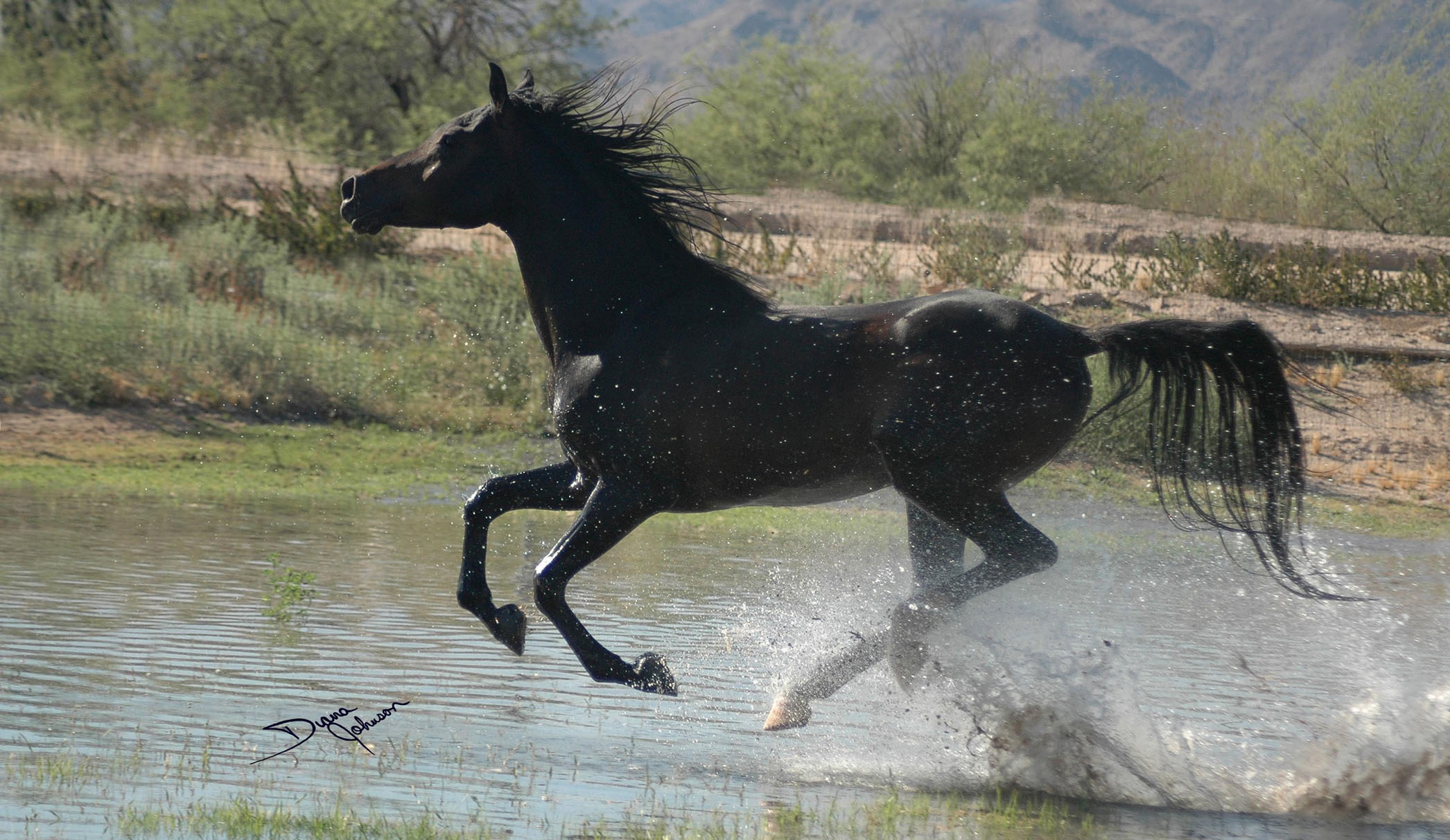
A true "drinker of the wind" Abbas Ibn Lothar (Ibn Lothar x Bint Roulett),
a grandson of Fadl's last born son, Lothar.
Diana Johnson photo.
Shahloul and Hamdan's three-quarter brother Fadl was the only straight Egyptian stallion which Mr. Babson began his Arabian breeding program in 1932. So all Egyptian stallions produced from the original Egyptian program of Mr. Babson were of the Ibn Rabdan sire line. Fadl actually had a huge impact on American breeding even more than within Egyptian lines, being the grandsire of the "fabulous Fadjur who was for many years in the 1950s through early 1970s the most heavily used sire in America. Three of Fadl's Egyptian sons have carried his sire line forward, Fa-Serr, Fabah and Lothar. These were very handsome horses found in many champions. One of the most handsome representatives of the Ibn Rabdan sire line at Babson's and a horse who looked very much like Ibn Rabdan was the liver chestnut stallion Serr Rou (Ibn Fa-Serr x Bahrou) a grandson of Fa-Serr and Fabah. Lothar was a horse I knew personally and he was a very typy and refined chestnut roan horse who was the vision of old 19th century engravings. The Babson horses have continued to be a consistent source of the Ibn Rabdan sire line and have long proven a worthy consideration as an outcross for intensely Nazeer bred horses. They are now just starting to show up in increasing numbers in Europe and in doing so, like other Ibn Rabdan sire line horses, add to the choices for the future of Arabian breeders everywhere.





